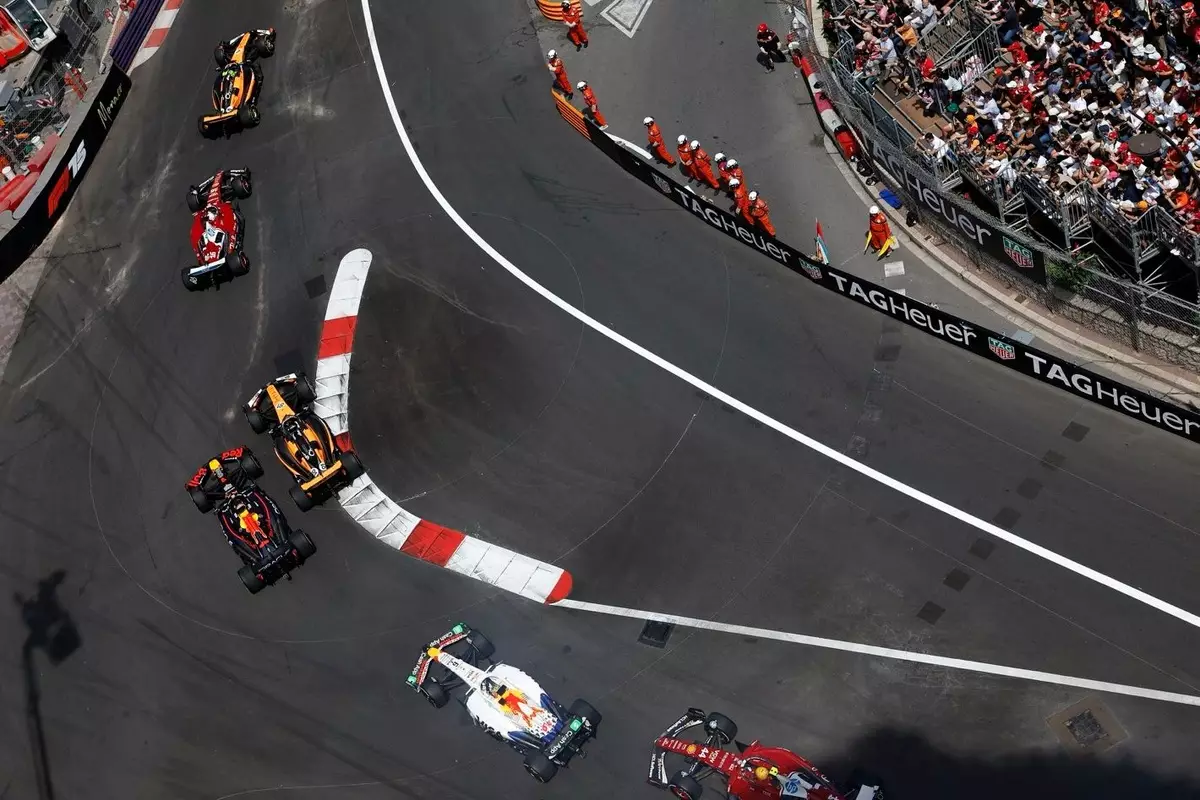The Monaco Grand Prix has long been revered as a crown jewel of Formula 1, drawing in spectators with its picturesque scenery and glamorous atmosphere. However, beneath the glitz lies a persistent issue—over the years, the races have become more akin to parades than competitive spectacles. Drivers find themselves trapped in a quagmire of difficulty in overtaking, and the fans are often left yearning for the thrilling duels that used to characterize this prestigious event. As we approach the centennial celebration of this Grand Prix, it is imperative to consider whether structural changes are necessary to breathe new life into this storied race.
Russell’s Radical Prescription
In light of recent events, including the failed “two-stopper” experiment, Mercedes driver George Russell has started to voice opinions that resonate with the frustrations of many in the paddock. While this experiment was a well-intentioned attempt to inject some unpredictability into the race, the outcome was disappointingly predictable. The top qualifiers maintained their positions almost unchallenged, and instead of exciting wheel-to-wheel racing, teams relied on strategic slowdowns—tactics reminiscent of a multiplayer video game rather than elite motorsport. Russell’s blunt acknowledgment that the current format is lacking speaks volumes. His suggestion of a “qualifying race,” where qualifying on Saturday and Sunday gives points and trophies, injects a fresh perspective into discussions about the future.
Strategic Stagnation: A Call for Creativity
What Russell exemplifies is a broader issue plaguing the sport: a stagnation of innovation in race formats. In a world where adaptability and strategic creativity are crucial, Formula 1 has been remarkably inert in addressing Monaco’s inherent structural problems. The street circuit might be iconic, but it has not evolved to accommodate the ever-increasing performance capabilities of its cars. Acknowledging this fact does not diminish the track’s historical significance; instead, it calls for the introduction of creative solutions to revive its competitive spirit.
Russell’s insight about the joy of driving at full throttle adds another layer to this conversation. The thrill of performance is what initially draws fans and drivers to racing. By considering the possibility of two distinct “qualifying races,” the excitement levels could dramatically rise while creating a spectacle on both days of the weekend, giving fans something to talk about well beyond the main race.
Acknowledging the Spectators: Beyond Champagne and Yachts
There is a poignant truth in Russell’s observation regarding the spectators at Monaco. Many attendees seem more interested in the social scene than the racing itself. The combination of exorbitant ticket prices and the city’s status as a playground for the wealthy often distracts from the core purpose of the event: motorsport. To ensure that the Monaco Grand Prix remains relevant, there must be innovations that cater not just to the elite but also to the casual fan who deserves thrilling action on the track. Changes should not only prioritize the spectacle’s elite but must engage the everyday fan, ensuring that the spirit of competition remains at the forefront.
A Leap into the Unknown: Embracing Novel Ideas
Exploring alternative formats, different tire strategies, or perhaps even temporary circuit alterations could reinvigorate interest in the Monaco race. The sport should not shy away from innovation for fear of disrupting tradition. After all, the very essence of motorsport is to push boundaries. Embracing new formats that reward not only qualifying excellence but also racecraft would provide fans an engaging spectacle, thereby enriching the entire experience.
Ultimately, Russell’s thoughts encapsulate a growing sentiment within F1—dare to reassess and innovate before the glorious Monaco Grand Prix fades further into antiquity. The allure of faster cars and technical drama can only be maintained through a commitment to dynamic racing experiences. If anything, the call for change is not just about the preservation of a race but rather about the evolution of the sport itself as it navigates the future.


Leave a Reply